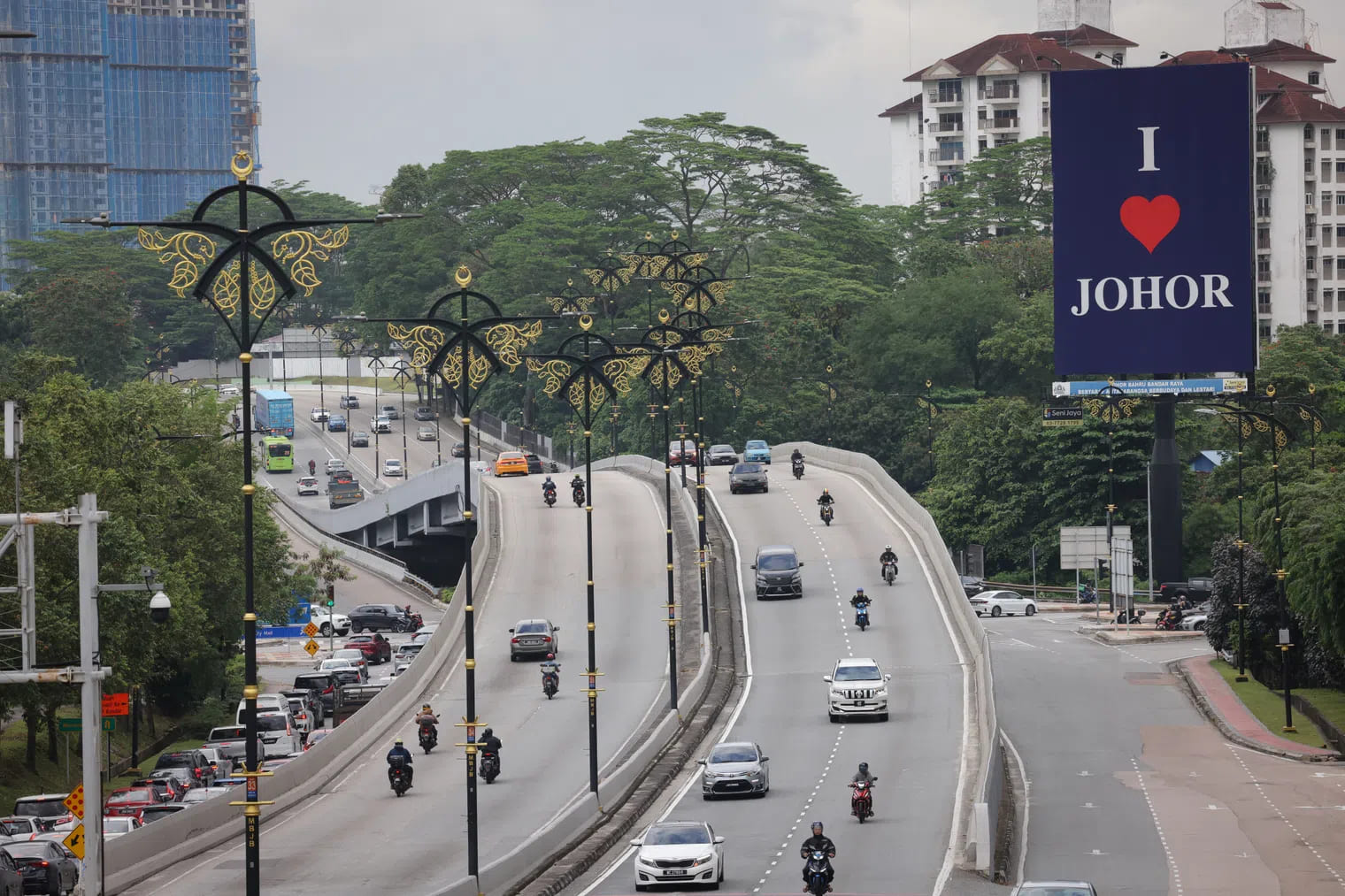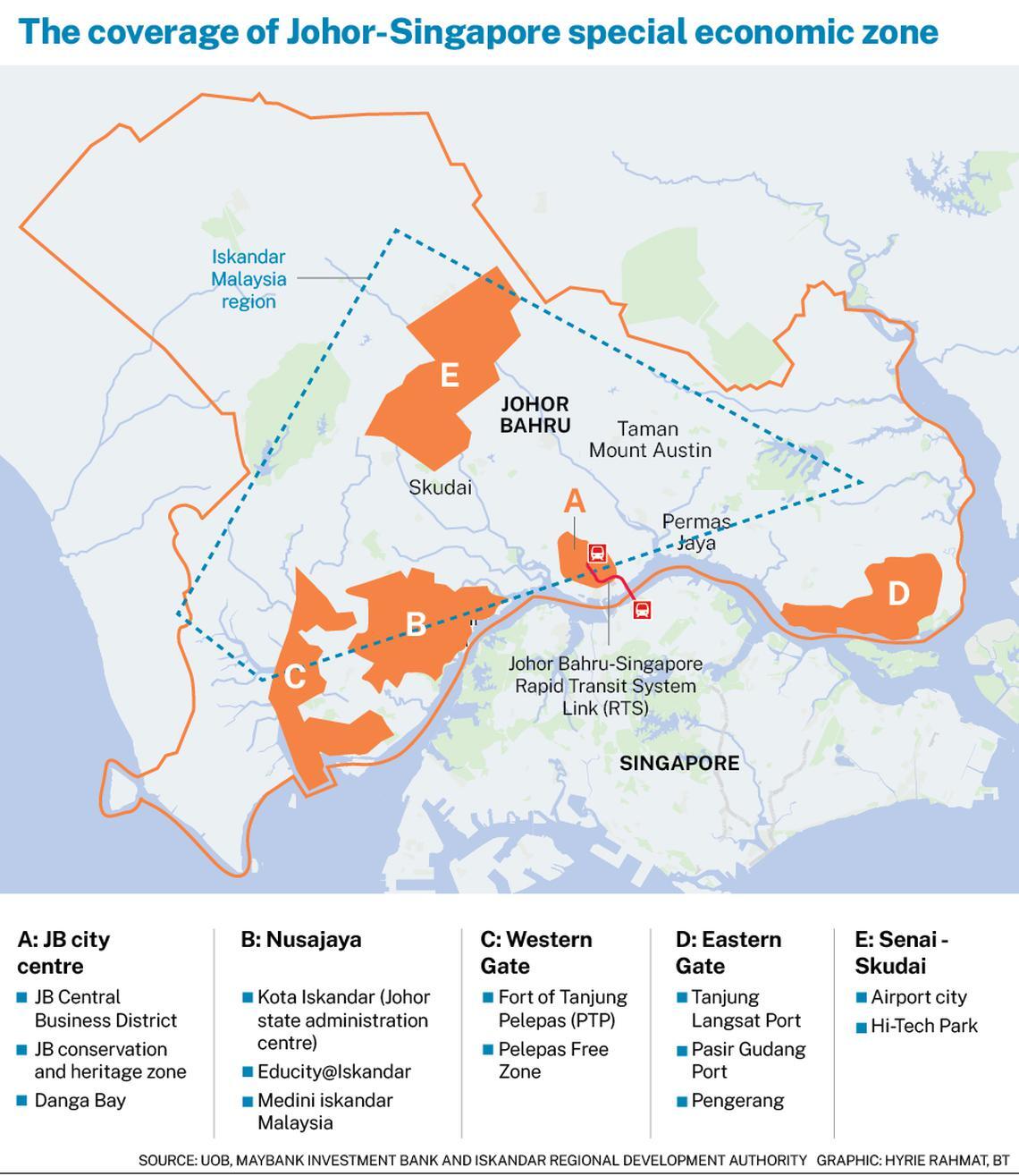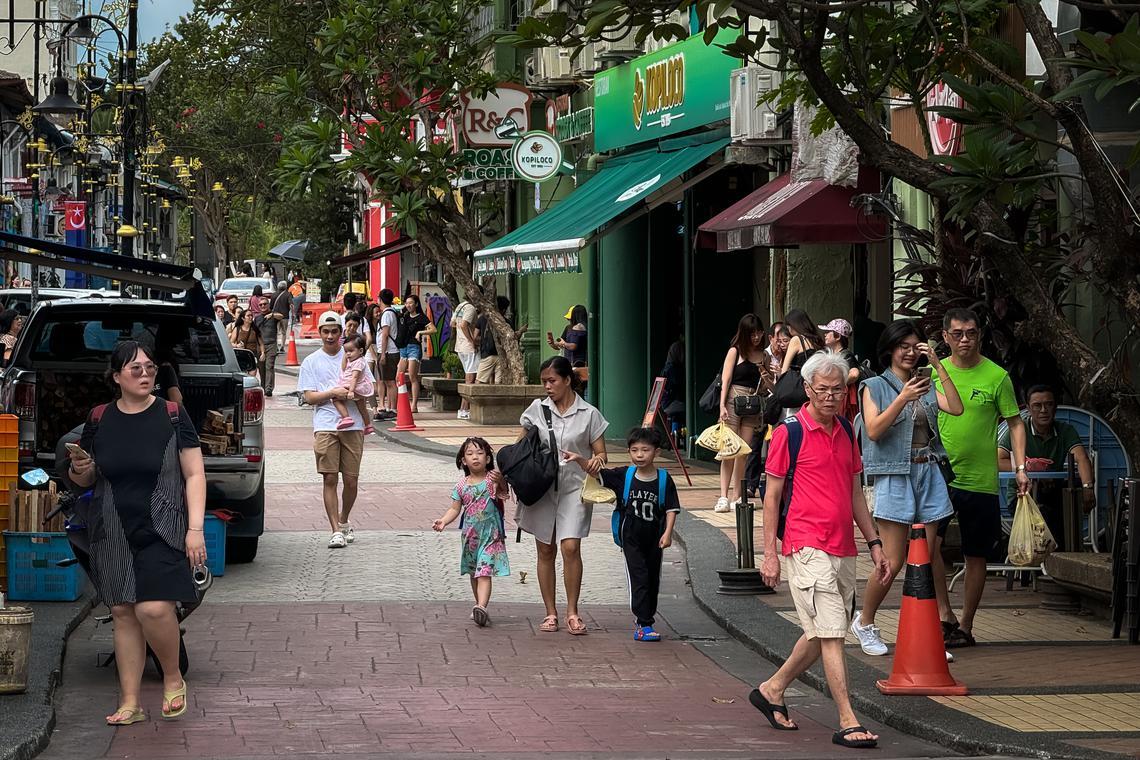Johor-Singapore Special Economic Zone: The countdown begins

(Photo credit: BT File)
Source: The Business Times
When the prime ministers of Singapore and Malaysia meet in December, one of the key outcomes is expected to be the signing of the Johor-Singapore Special Economic Zone (JS-SEZ) joint agreement.
Investors and business leaders are waiting to learn the details of the proposed zone, which aims to bridge trade, investments and knowledge between both sides. Observers said the mega project will drive growth in key sectors such as aerospace, advanced agriculture, medical devices, information and communication technologies, and electric vehicles.
A joint statement issued earlier this month after a special meeting of the Malaysia-Singapore Joint Ministerial Committee for Iskandar Malaysia said that the JS-SEZ aims to “bring mutual benefits to businesses and people from both countries, including enhancing the flow of goods and people, improving the ease of doing business, and supporting talent development”.
The dates of the leaders’ retreat between both prime ministers, Lawrence Wong and Anwar Ibrahim, have not been officially announced yet.
However, a report in Malaysia’s The Star newspaper on Nov 7 quoted Johor Chief Minister Onn Hafiz Ghazi as saying that the retreat would take place over two days on Dec 8 and Dec 9. He added that the “tentative” plan is to hold it in Putrajaya, the administrative capital of Malaysia.
The expected signing of the JS-SEZ agreement comes nearly a year after a memorandum of understanding was inked in January between Singapore and Malaysia to finalise an agreement to set up the zone by the end of 2024.
It’s been reported that the zone – spanning more than 3,500 square km, more than four times the size of Singapore – will likely cover the Iskandar Malaysia region, as well as the Pengerang district near Singapore’s Pulau Tekong.
The JS-SEZ will span across six districts – Johor Bahru, Iskandar Puteri, Pasir Gudang, Pontian, Kulai and Kota Tinggi.
Jeffrey Lai, president of the Johor Bahru Chinese Chamber of Commerce and Industry, said the zone will harness the strengths of both Johor and Singapore to attract foreign direct investment.
His optimism aligns with the findings of a recent survey conducted by the Singapore Business Federation (SBF). The results, which were announced in July, revealed that 93 per cent of 160 business owners view Johor as an appealing investment destination.
Notably, half of them already have operations in the state.
Rudyanto Azhar, director of economics and investment at the Iskandar Regional Development Authority, said that Johor has laid a solid investment foundation through Iskandar Malaysia. The latter has attracted RM413.1 billion (S$124.8 billion) in cumulative investments from 2006 to 2023, surpassing its 2025 target of RM383 billion.
Key investors include China, Singapore, the Netherlands, Japan, the US and South Korea, with foreign investment accounting for 45 per cent of total inflows to Iskandar Malaysia.
“Seventy per cent of this, or RM291.4 billion, has been realised, demonstrating our progress towards the 2030 target (of RM636 billion),” he told The Business Times.

There are several factors in the JS-SEZ’s favour, said Rudyanto. In the near term, these include the upcoming Johor-Singapore Rapid Transit System (RTS), the Gemas-Johor Bahru Electrified Double Track, and the new Special Financial Zone in Forest City.
“Enhanced educational infrastructure and a family-friendly environment further make Johor an appealing choice for investors and expatriates alike,” said Lai.
As Johor adapts to meet the growing global demand for high-tech industries, the JS-SEZ’s launch in December will put the zone in a position for rapid growth and investment expansion across South-east Asia, he added.
To attract investors to the JS-SEZ, several incentives have already been proposed. These include a competitive tax regime, such as a flat income tax rate of 15 per cent for skilled foreign workers, significantly lower than the standard rate.
Bridging gaps, overcoming bureaucratic hurdles
Despite the rosy outlook for the zone and its potential, talent – specifically, the shortage of workers and the challenge of retaining them – remains the main concern for many business owners in Johor.
Teh Kee Sin, an adviser to the Johor South SME Association, observed that Johor’s historical focus on back-end industries has created limited opportunities for qualified professionals.
“As Johor moves up the value chain, we anticipate a rise in high-quality roles for local experts,” he said.
With its capacity to attract foreign investment, he added the JS-SEZ offers people the exposure and career progression that many previously sought overseas. Teh believes that the zone’s focus on education and training will help bridge the regional skills gap and boost local talent development.
The survey by SBF raised the same concerns, with nearly 60 per cent of businesses indicating that they continue to struggle to find skilled workers in Johor.
Attracting Singaporean talent across the border also presents its fair share of challenges, the survey found. Contributing factors include employment pass issues (60 per cent), skill gaps in the Malaysian workforce (58 per cent), and salary mismatches (21 per cent).
The federal and Johor governments are addressing the so-called “brain drain” problem by ramping up investments that promise better-paying jobs, especially for high-skilled talent in engineering and technology.
Earlier this month, the Johor state government unveiled the Johor Talent Development Council that aims to develop a skilled workforce ecosystem via vocational education and training.
Overcoming red tape
As the JS-SEZ covers a wide area across six districts, navigating the regulatory landscape can be cumbersome for businesses, said observers.
Speaking in Parliament, Malaysia’s Economy Minister Rafizi Ramli said that harmonising the process of issuing business permits by six councils and related federal agencies could pose a stumbling block for the zone to succeed.
In dealing with this, the government has established a one-stop centre – Investment Malaysia Facilitation Centre Johor – to streamline business approvals and facilitate investor engagement.
SBF’s survey also highlighted the need for enhanced cross-border movement of people and goods, with 36 per cent of respondents advocating for better connectivity, such as a special immigration lane to facilitate smoother travel.
One cross-border project that will help on the connectivity front is the Johor Bahru-Singapore RTS, which is set to slash commuting time to just 15 minutes when it is operational at the end of 2026. The trains will be able to ferry up to 10,000 passengers per hour each way.

